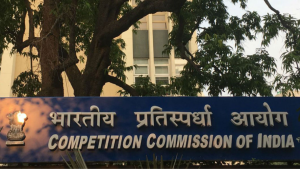

How Should Courts Function After the Lockdown?
The COVID-19 pandemic and the resulting lockdown will change the way many institutions are structured and will alter how we go about our daily activities. The judiciary is no exception. The Supreme Court has issued guidelines and asked all high courts to use video conferencing facilities to hear cases and to hear only urgent matters.
Justice cannot be put on hold during such an emergency. In such a situation when the normal functioning of courts has come to a standstill, resources and manpower should be mobilised enable the judiciary to continue functioning, as far as possible. During this time, there is a need for a framework to prioritise cases based on subject matter and stage. There is a need for the high courts to formulate guidelines on what cases need to be prioritised for district and for their respective high courts.
Prioritisation of cases
While many high courts have issued guidelines on urgent matter hearings during the lockdown. They need to have a detailed plan on how they wish to prioritise cases once the lockdown is lifted since there will be a large backlog to deal with. The types of cases handled by the district courts and high courts vary hence should be prioritised accordingly.
During the lockdown, in the district courts, criminal cases that involve the loss of personal liberty like bail, anticipatory and remand cases should be dealt with first. Domestic violence has been on the rise since the lockdown was enforced, these cases should be handled with care ensure proper protection of women. Cases under the Protection of Children from Sexual Offences Act, 2012 given their sensitivity should be prioritised. The existing provisions regarding in-camera trials can be easily extended to virtual hearings.
Cases based on simplicity such as cheque bounce cases can be easily be dealt with first. Any interim application or injunction should be given preference based on the prima facia nature of the case and the probability of irreversible damage to the claimant. Family matter like maintenance cases and mutual consent divorce matters could easily be resolved through telephonic hearings. The economic slow-down resulting from the lockdown is likely to lead to job losses. Labour disputes in connection with such lay-offs can also be prioritised.
ADR for civil cases can be explored as an option. Judges should proactively encourage litigants and lawyers to exhaust ADR methods before approaching the court. These disputes can be resolved in a time bound manner and would untimely reduce the burden on courts.
Writ petitions and PILs in the Supreme Court and high courts that raise serious public interest concerns, especially related to the lockdown or the pandemic should be prioritised. Within these, habeus corpus writ petitions should get priority as they are related to individual liberty. The categories of criminal cases that are prioritised before the trial court can also be prioritised if they come up before the High Court. The court can also hear miscellaneous cases that are old and infructuous, by dealing with cases that have simple facts and are easy to dispose. Cases that have reached the final stage can be heard to balance the workload. This will help in reducing the overall pendency and backlog of cases.
Way forward
It is important for courts to start preparing for a post-lockdown scenario. As of now, many high courts are hoping to gradually open from mid-May. When courts do open up, care should be taken to maintain social distancing. The listing of cases should bring in certainty in hearings and litigants shouldn’t unnecessary wait around in the court premises. Strict timelines for hearings should be implemented to practice the social distancing norm. This should be done though embracing technology to the fullest extent by updating daily cause lists on the respective court websites and notifying lawyers and litigants through text messages or emails.
Courts should list fewer cases each day to avoid crowding in the court premises, but ensure that hearings take place in each of the cases listed. Each case should get a fixed time slot, e.g. if there are 30 cases listed on a day, split them into groups of 10 and allot different time slots during the day.
E-filing facility has been enabled in few high courts and this feature should be used as widely as possible to reduce crowding of people in the registry. The use of telephonic calls and video conferencing facilities can be used hear cases not just for urgent matters but as an alternative to physical hearings.
Courts will not be able to return to their old listing practices after they re-open given the need to continue social distancing. Prioritisation of cases based on stages and the subject- matter is crucial to an efficient functioning of courts especially once courts re-open. The high courts should prioritise cases based on the volume of particular case types and the backlog of cases and employ technology to make court processes more effective.
To read more about the Justice Platform visit: https://www.dakshindia.org/next-generation-justice-platform/
The views expressed in this article are solely those of the author’s and they do not represent the views of DAKSH.

Amulya Ashwathappa
RECENT ARTICLES


Testing the Waters: Pre-Implementation Evaluation of the 2024 CCI Combination Regulations

Not Quite Rocket Science

Administration of justice needs an Aspirational Gatishakti

-
Rule of Law ProjectRule of Law Project
-
Access to Justice SurveyAccess to Justice Survey
-
BlogBlog
-
Contact UsContact Us
-
Statistics and ReportsStatistics and Reports
© 2021 DAKSH India. All rights reserved
Powered by Oy Media Solutions
Designed by GGWP Design